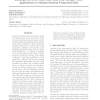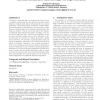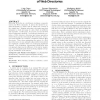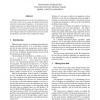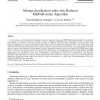262 search results - page 31 / 53 » An information-theoretic approach to quantitative associatio... |
ICML
2004
IEEE
14 years 9 months ago
2004
IEEE
Inductive learning of first-order theory based on examples has serious bottleneck in the enormous hypothesis search space needed, making existing learning approaches perform poorl...
KDD
2006
ACM
14 years 9 months ago
2006
ACM
Correlation clustering aims at grouping the data set into correlation clusters such that the objects in the same cluster exhibit a certain density and are all associated to a comm...
WWW
2007
ACM
14 years 9 months ago
2007
ACM
Mirroring Web sites is a well-known technique commonly used in the Web community. A mirror site should be updated frequently to ensure that it reflects the content of the original...
CORR
2004
Springer
13 years 8 months ago
2004
Springer
Mining frequent itemsets is at the core of mining association rules, and is by now quite well understood algorithmically for main memory databases. In this paper, we investigate a...
AMC
2008
13 years 8 months ago
2008
In this study, a new classification technique based on rough set theory and MEPAR-miner algorithm for association rule mining is introduced. Proposed method is called as `Reduced ...
